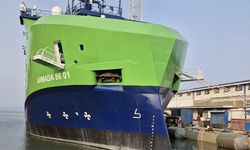The US Navy is planning a revolutionary supersonic submarine that can potentially travel faster than the speed of sound.
Reaching the speed of sound on land or in the air is one thing, but doing it underwater is a whole different ball game.
Back in 2016, a team of researchers at Penn State, funded by the US Navy, began working on a prototype that could achieve supersonic speeds underwater.
And they’ve now decided to explore the possibility of turning this into reality with modern-day technology.
The biggest problem with doing that underwater is the immense amount of drag that’s generated.
But in order to overcome this issue, the team figured out a solution involving a bubble.
This is the same principle that the Soviets used during the Cold War to develop the Shkval – a type of torpedo that could reach 370 km/h, or 230 mph, underwater.
The high speed was made possible by using something called ‘cavitation‘.
Put simply, a combination of the shape of the nose cone and the expansion of gases from the engine and the gas generator in the nose, created a bubble that ‘wrapped’ around the torpedo, thus reducing drag.
The US Navy isn’t the only entity that’s working on a similar type of supersonic submarine.
For starters, achieving supersonic speed is always difficult – this is one of the reason why we’ve never had a supersonic aircraft (for commercial use) since Concorde.
Moreover, this type of technology will require years of development before it’s deemed safe enough for real-world tests.
And even when that happens, it’ll be something that’s reserved for military use.
Submarines were invented in the 1600s and yet, they’ve never really been available for passenger use cases.
It’s easy to see why, though.
Last time somebody tried to use one for tourism purposes, it didn’t go well.





